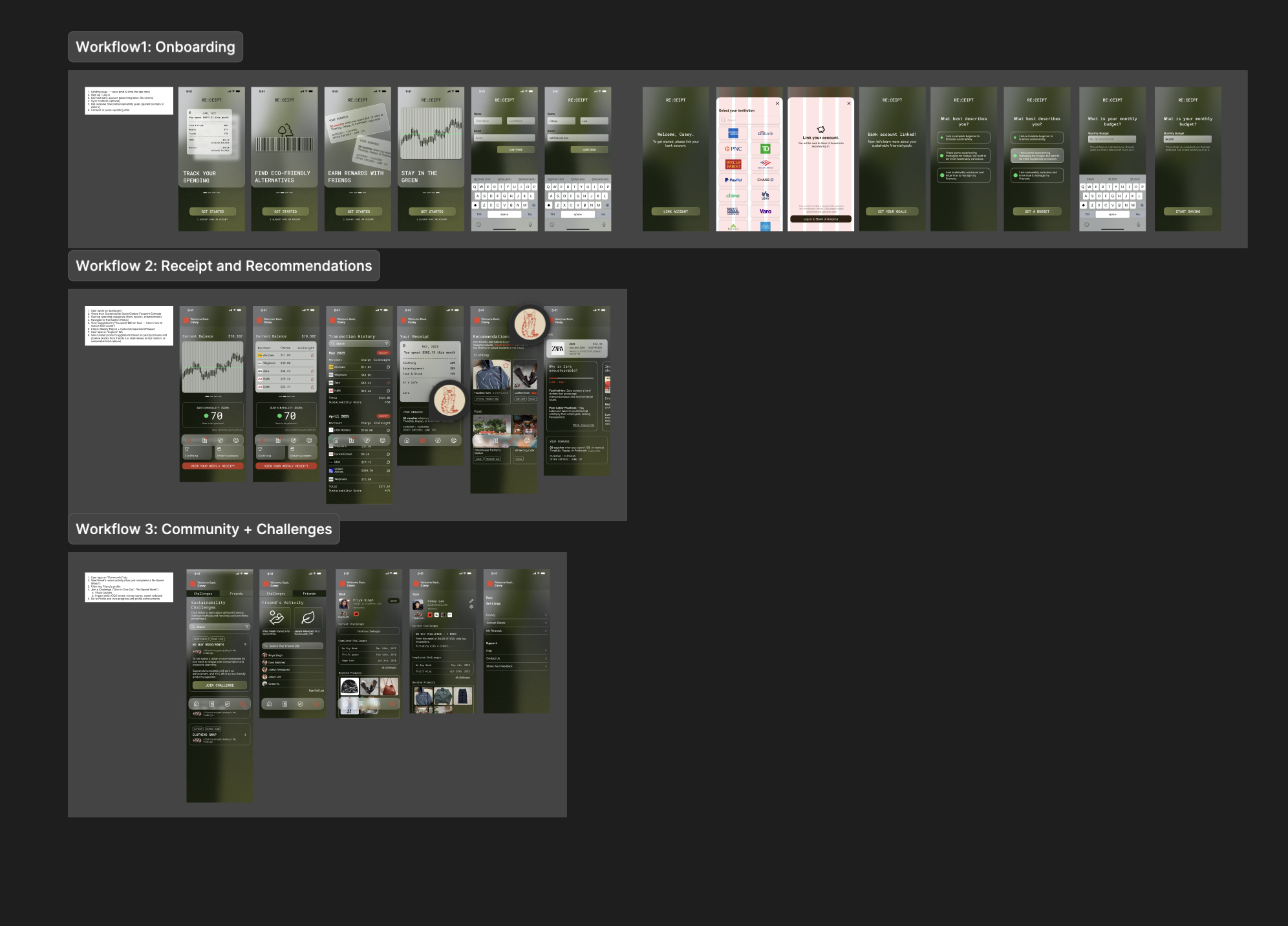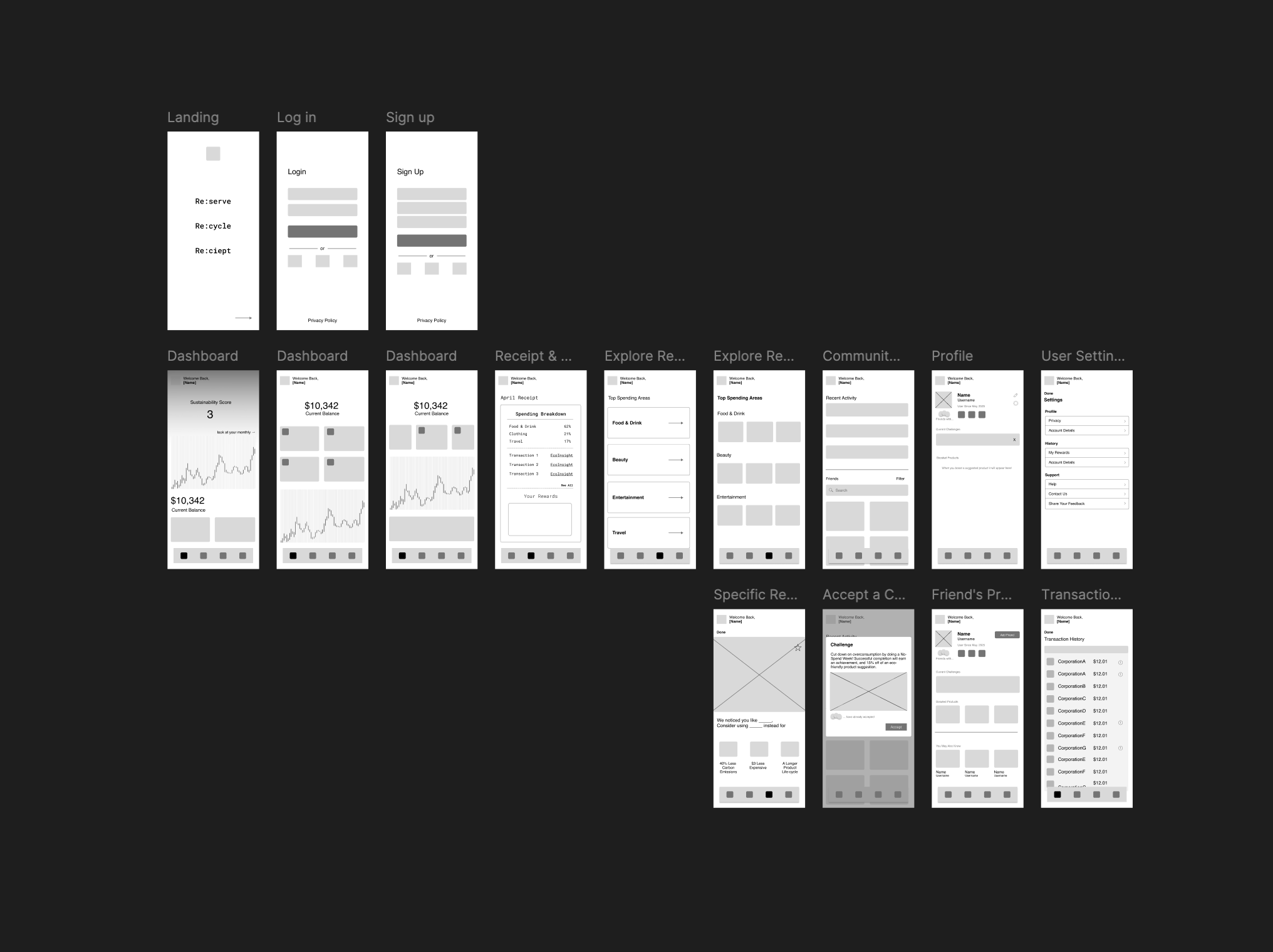
Re:ceipt
Design Case Study 01 / May 2025
Re:ceipt is a mobile application designed to help financially-independent young adults develop sustainable spending habits by integrating financial tracking with eco-friendly purchase suggestions.
figma
notion
miro
Cornell UX Design-a-thon Winner
Design-a-thon
Designer
Team Project

The Problem
College students and young adults lack a centralized platform to develop environmentally-sustainable financial habits, leading to overconsumption, excessive waste generation, and an overall larger carbon footprint.
Without financial guidance during this formative period, students can fall victim to environmentally harmful patterns of overconsumption that can persist throughout adulthood.
The Solution
RE:CEIPT is a comprehensive mobile application for young adults who struggle with balancing newfound financial responsibilities and social pressures to spend money. The app helps users develop sustainable consumption habits while making sound financial decisions, promoting proactive fiscal and environmental responsibility in young adulthood.
USER RESEARCH
To better understand the financial and sustainability behaviors of young adults, we surveyed 31 students and recent graduates (aged 18–26). Our questions aimed to identify blockers preventing mindful consumption.
Key Design Decisions
01. Social Influence
User research revealed that users tend to spend to fit in with peers, so we created community features that redirect social pressure toward sustainable choices.
02. Rejecting Shame Culture
Our findings showed users respond better to encouragement and empowerment rather than judgment about existing behaviors. We shaped Re:ceipts tone and messaging to focus on positive, achievable steps toward sustainability rather than criticizing current choices.
03. Providing educational value
Benchmarking competitive banking apps showed a lack of sustainability guidance. Since participants valued simplicity and convenience but struggled to find time for additional research on sustainable practices, we integrated financial literacy directly into core features.
User Research
Iteration








Feedback & Takeaways
01.
Working asynchronously 300 miles apart required high-level communication and trust between designers.
02.
Balancing Economic and Environmental Sustainability in one platform needed very focused user research to prevent scope creep.
03.
Visual elements need stronger contrast as elements start to clash with one another.
04.
How can the app or users keep up to date on company changes that affect its sustainability score?'
05.
Users may already track spending elsewhere, so an adoption strategy is needed for app users.